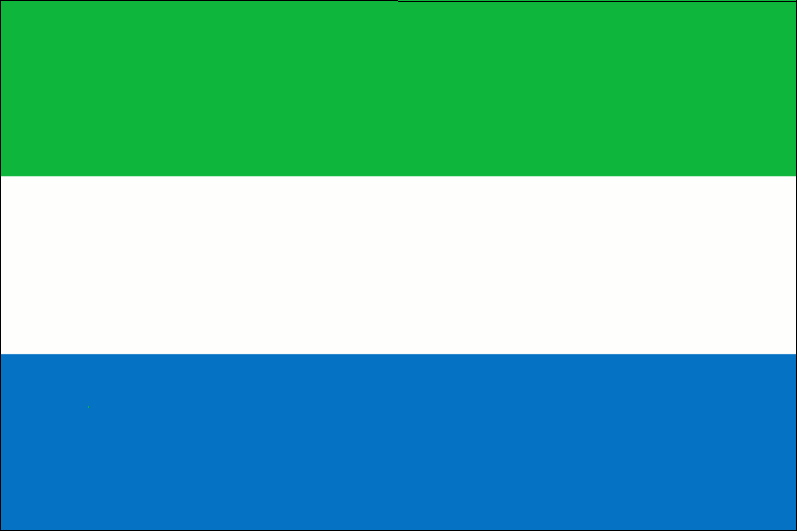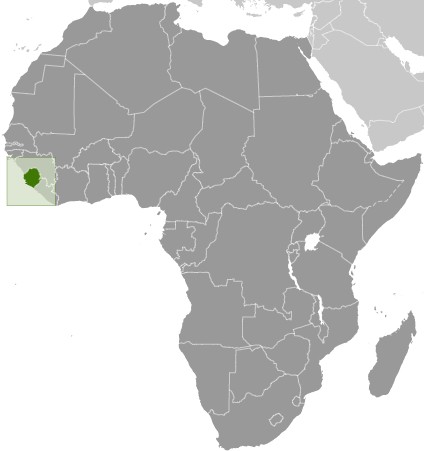Articles/Reprints
New York Times Travel Article:
"A Land of Fragile Beauty
Emerges After Years of War"
(Copyrighted by Publisher or Author: All Rights Reserved. All articles are for educational purposes at Inver Hills Community College. They may not be reproduced for other purposes without permission of the publisher or author. Students using reprints from this site for research papers should find the original articles at the newspaper or magazine Web sites, and then use those Web sites for bibliography-page entries.)
ON the beach in Sierra Leone, the bonfire was growing. Aside from our group, made up mostly of United Nations and relief workers, there was no sign of human activity for miles. The perfect white sand, the pounding of the waves, the burnt sky that felt close enough to touch - it was ours alone. When the sun was gone and the moon was bright, we swam, and each stroke was illuminated by brilliant phosphorescence. It was like Hawaii without the tourists.
Sierra Leone is a stunningly beautiful place. But it is also a heartbreaking one. In Freetown, the capital, the signs of the 11-year civil war that ravaged this West African nation are everywhere. Children who had their limbs lopped off by rebel soldiers loiter on dusty trails. Garbage is piled high on the streets during the day, only to be set ablaze at night, providing the only light, as electricity is still rare. Former soldiers sit around drinking the local beer, eerily silhouetted by the midnight pyres. There is a reason this country has not yet found itself on the itinerary of even the most intrepid backpackers. Despite its beauty, it is very much on the edge of civilization.
Once the jewel of the British colonies in West Africa, Sierra Leone has more recently been associated with the most outrageous atrocities. The civil war, which started in 1991, left at least 50,000 civilians dead. Over half of the country was displaced. Children as young as 10 were forced into military conscription forming platoons called Small Boy Units, learning how to use an AK-47 before learning how to read. And most notoriously, during the later stages of the conflict, men, women and even children had their hands and legs amputated in a campaign of terror and violence.
By night, at the Copa in Freetown, wealthy locals, Lebanese diamond merchants, soldiers, aid workers and prostitutes all party with a strangely apocalyptic euphoria. The electric slide was the dance craze of the moment when I was there this spring. On a veranda, stifling hot even with a breeze, a group of about 20 local women shuffled along on the dance floor before the hip-hop music kicked in and the rest of the crowd got its groove on. A local gin is brewed nearby, something foreigners are warned to steer clear of because it has been known to double as paint thinner.
Freetown is relatively safe to explore by day. However, the roads are narrow, often running along steep embankments, and most taxis are driven by former soldiers, who, not surprisingly, can be a bit on the reckless side. Locals will pile 10 into a small sedan, paying a nickel for a ride, but a taxi can be rented for around $5 an hour to go anywhere a visitor wants. Drivers more experienced in dealing with Westerners can be hired through the hotels, a safer alternative. A day should not cost more than $50.
Much of the city is still in ruins, and there is not much in the way of colonial-era architecture that survives, mainly the stilt houses built above the abandoned Hill Station. Tin shacks - some serving as shops, others as beer stands - line the narrow roads, and they are invariably jam-packed, with people spilling into the street and making traffic unbearable at certain points.
The eastern part of the city is where the slums are, so most visitors tend to stay in the western section, where the best crafts are sold. The largest arts depot is known as the covered market, where people hawk everything from paintings to jewelry to tapestries, with most items costing no more than a few dollars. However, as some of the goods are imported from nearby countries, finding authentic crafts can be difficult.
The most interesting carvings are found in small shacks scattered around the city, where the artisans also take requests.
When I was there, I saw one local craftsman, Mohamed, put the finishing touches on life-size head carvings. In a week's time, he turned two large pieces of wood into detailed, lifelike recreations based on a photo. Some features were exaggerated, but for the most part, they were quite fine. Working out of the same small hut where he lives, he took obvious pride in his work, even as he and his wife struggled to raise four children.
But what will most draw people to Sierra Leone lies outside the city limits.
A weekend refuge for ex-pats is owned by Franco, whose small hotel on the beach (officially called Florence's but known popularly as Franco's) has six rooms, costing about $50 a night each. Franco, who looks like a cross between Gérard Depardieu and Nick Nolte on a bad day, speaks a language that no one else understands. His English is virtually nonexistent, and his Krio, the local language, is inflected with his native Italian. Someone who speaks Italian can communicate a bit, but even that is a struggle.
Franco came to Sierra Leone in the 1960's for the scuba diving, he said. An acquaintance of Jacques Cousteau, he found his bit of paradise and never left. During the war, he was beaten up by soldiers and decided to wait out the fighting by spending most of his time offshore on his boat. The rebels, he said, don't swim. Luckily, it is not necessary to communicate with Franco to have a fabulous dinner. He keeps a refrigerator stocked with a wide variety of French and Italian wines and makes a savory fish carpaccio with fish caught that day ($10 and $15 for a meal with a bottle of wine).
Past Franco's there are two beaches good for camping - River 2 and Tokke Beach. Both are so isolated you feel you have washed up on an undiscovered island.
Villagers who live in the nearby jungle will take care of you at either site for a few dollars, setting up bonfires and even cooking a dinner of freshly caught fish and rice. We brought wine and candles, and they laid out a table on a wood plank salvaged from the remnants of what was once a luxury French resort nearby, making the meal in the middle of nowhere feel surprisingly civilized.

